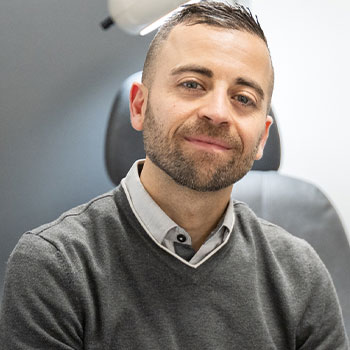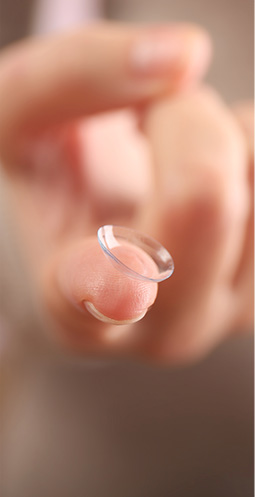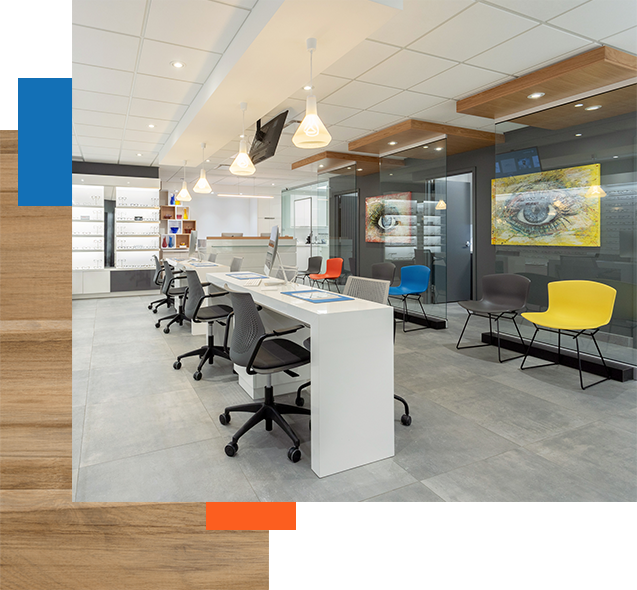What is IRPL?
Intense regulated pulsed light (IRPL) therapy is a relatively new dry eye treatment. It’s particularly effective in treating meibomian gland dysfunction (MGD), the most common cause of chronic dry eye.
IRPL targets all aspects of meibomian gland dysfunction by:
- Improving meibomian gland function
- Unclogging meibomian glands
- Reducing inflammation
- Improving tear film quality and stability by restoring the lipid (oil) layer of the tear film
It is also one of the only treatments that can help potentially regenerate meibomian gland structure.
This treatment is both efficient and effective, making it a promising treatment for persistent dry eyes.
The Difference Between IRPL & IPL
IRPL vs. IPL Treatment
You may have heard of IPL, or intense pulsed light therapy. IPL is similar to IRPL, with one key difference. IRPL uses regulated pulses of light, whereas IPL uses unregulated pulses of light.
While it might seem like a small difference, IRPL delivers a much more precise and targeted treatment in comparison to IPL.
In IRPL, each flash of light delivered by the device is divided into sub-pulses. Each sub-pulse is then managed individually, with different durations and light intensities possible.
The energy level delivered during each pulse of light is uniform from the beginning of the pulse to the end. This makes IRPL much more efficient and effective compared to IPL.
In IPL, the energy of each pulse gradually decreases from the beginning to the end of the pulse, reducing its effectiveness.
Which is Better for Dry Eyes?
The E>Eye device, which utilizes IRPL technology, was specifically designed to treat the main source of chronic dry eyes. IPL, on the other hand, was actually first developed as a skin treatment, then modified for dry eyes.
IRPL is 20-25% more effective in treating dry eyes after the first treatment than IPL.
With IRPL, you’re getting a treatment that is tailored to dry eyes, down to each individual light pulse.
How Does IRPL Treatment for Dry Eyes Work?
E>Eye
The E>Eye is the patented IRPL device used to treat dry eyes. It treats dry eyes by improving the function of the meibomian (oil) glands of the eyelids.
Meibomian glands that are not functioning properly can eventually lead to gland dropout (loss) or atrophy, which leads to long-term and severe dry eye symptoms. When meibomian glands don’t secrete enough oil onto the eye, tears evaporate too quickly, leading to a cycle of inflammation.
This leads to dry eye symptoms such as burning, stinging, irritation, watering, and redness. By restoring gland function, IRPL can make sure your eyes have the proper hydration.
The E>Eye produces perfectly calibrated light pulses that target the meibomian glands. These light pulses result in a neurological stimulation of the parasympathetic nerve which supplies the meibomian glands.
This neurological stimulation helps to:
- Regenerate the meibomian glands
- Improve the quality of meibomian gland secretions
- Stabilize the lipid (oil) layer of the tear film
The regulated light pulses from IRPL help break the vicious cycle of inflammation, leading to a long-term improvement of dry eye symptoms. It also helps prevent further atrophy of the meibomian glands.
What Should I Expect During Treatment?
Each treatment session takes only a few minutes at your optometrist’s office. During treatment, you’ll sit in a chair with your head tilted back.
To protect your eyes, you’ll wear protective metal goggles. Your optometrist will also apply ultrasound gel around your eyes on the cheekbones and temples.
Then, your optometrist will use the IRPL device to apply a series of 5 flashes under your eye, starting from the upper cheek area under the eye and ending towards the outer edge of the eye.
The same process is then repeated on your other eye. The treatment is quite comfortable and completely pain-free.
The treatment protocol involves 3 sessions for optimal results, with an optional fourth session:
- The first treatment (day 1)
- The second treatment is 2 weeks later (day 15)
- The third treatment is 30 days later (day 45)
- The fourth (optional) treatment is another 30 days later (day 75)
What Results Should I Expect?
Most patients see an instant improvement, with a 90% satisfaction rate after the treatment sessions. The nerve stimulation from IRPL helps the meibomian glands function normally within a few hours. The effects of the treatments are cumulative, which is why it is important to follow the treatment protocol.
The results can last anywhere from 6 months to 3 years, depending on your eyes. If your symptoms do start to come back, your optometrist will likely recommend single maintenance sessions.
For long term results, you should have at least 3 treatment sessions and follow any recommendations from your optometrist.
The Safety Profile of IRPL
The E>Eye treatment, which utilizes IRPL technology, is completely safe. When the proper treatment protocol is used, there is no risk of any accidents, long-term negative side effects, or any unexpected reactions.
There are only 2 cases where patients should not be treated with IRPL:
- Pregnancy
- Patients with very dark skin (skin type 6)
Patients with skin types 1 to 5 can be safely treated with IRPL (skin types 4 and 5 are treated with a slightly reduced light energy).
The E>Eye device is currently used in over 50 countries. In 2020, the device received Health Canada approval to be used as a treatment for dry eyes in Canada.
There are currently more than 1,500 E>Eye devices in use around the world, and over 150,000 patients have been treated with this technology.
How Do I Know if IRPL is Right for Me?
Your optometrist will likely recommend IRPL if:
- You have chronic dry eye
- You have meibomian gland dysfunction (MGD)
- Other treatments, like eye drops, have not provided long-term relief
For any dry eye treatment, it’s best to ask your optometrist. Your optometrist will be able to properly diagnose your dry eye and recommend the right treatment.
Stoney Creek Eye Care is proud to be one of the few Canadian optometry practices to offer this breakthrough technology in dry eye treatment.








